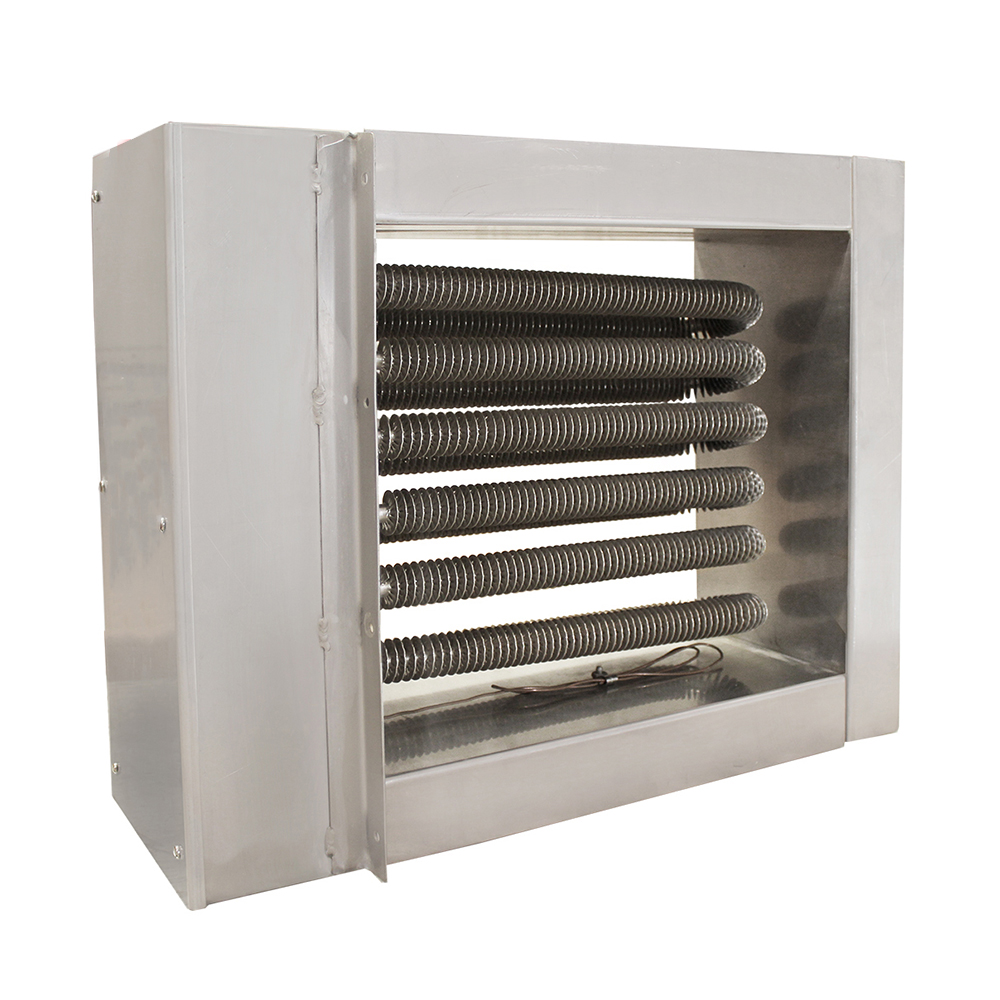Air duct heaters are essential components in HVAC (Heating, Ventilation, and Air Conditioning) systems, designed to provide controlled heating by warming the air flowing through ductwork. They play a vital role in maintaining comfortable indoor temperatures, especially in large commercial, industrial, and institutional buildings. Understanding how air duct heaters work involves exploring their design, components, heating mechanisms, control systems, and typical applications.
1. Basic Principle of Air Duct Heaters
An air duct heater’s primary function is to raise the temperature of air passing through a ventilation duct. This process is usually achieved by converting electrical energy or combustion energy into heat, which is then transferred to the air stream. The warmed air is subsequently distributed through the duct network to various rooms or zones, ensuring efficient and uniform heating.
2. Types of Air Duct Heaters
There are two main types of air duct heaters based on their heating source:
Electric Air Duct Heaters: These use electrical resistance elements to generate heat. When electricity passes through the resistance coils, they heat up and transfer heat to the passing air. Electric heaters are clean, quiet, and easy to control, making them suitable for many indoor environments.
Hot Water or Steam Air Duct Heaters: These utilize hot water or steam supplied from a boiler system. The hot water or steam circulates through a coil inside the heater, and as air passes over the coil, it absorbs heat before moving into the duct system. These heaters are common in larger buildings with existing hydronic heating systems.
This explanation focuses mainly on electric air duct heaters, as they are widely used and easier to understand in principle.
3. Key Components of an Electric Air Duct Heater
Heating Elements: Usually made of nichrome wire or other highresistance alloys, the heating elements convert electrical energy into heat through resistance heating.
Housing and Mounting Frame: The heating elements are housed inside a metal casing that can be inserted into the ductwork. The housing is designed to withstand high temperatures and allow proper airflow.
Thermostat or Control Sensors: These devices monitor the air temperature and regulate power supply to the heating elements, maintaining the desired temperature and preventing overheating.
Safety Devices: These include highlimit switches or thermal cutoffs that shut down the heater if temperatures exceed safe levels.
4. Heating Process
When the air duct heater is energized, electricity flows through the resistance heating elements. Due to the electrical resistance, the elements heat up quickly, reaching high temperatures. As air from the ventilation system is pushed through the duct, it passes over or around the heated elements. The heat transfers from the elements to the air by convection and radiation.
The heated air then continues through the ductwork to the conditioned spaces. The process is continuous and controlled by thermostats to ensure stable, comfortable temperatures without wasting energy.
5. Control and Regulation
Efficient operation of air duct heaters depends on accurate temperature control. Thermostats, temperature sensors, or building automation systems monitor the air temperature in the ducts or the conditioned space. Based on the readings, these controls modulate the electrical power to the heating elements, turning them on or off or adjusting their power levels through phase control or step control methods.
Modern systems may use digital controllers or integrate with smart building management systems to optimize energy use and maintain precise temperature control.
6. Applications of Air Duct Heaters
Air duct heaters are used in various settings:
Commercial Buildings: To provide supplemental heat in large office buildings, shopping malls, and schools where central HVAC systems require boosting during cold weather.
Industrial Facilities: To maintain process temperatures, prevent freezing of ventilation air, or create comfortable work environments.
Hospitals and Laboratories: Where clean, controlled air temperature is critical.
Data Centers: To maintain optimal temperatures for equipment.
7. Advantages of Air Duct Heaters
Fast Response Time: Electric heaters can quickly raise air temperature on demand.
Compact Size: They fit directly inside ductwork, saving space.
Easy Integration: Compatible with existing HVAC systems.
Clean Operation: No combustion, no emissions.
Precise Control: Allows for accurate temperature settings.
8. Considerations and Limitations
Energy Consumption: Electric heaters can consume significant energy, so efficiency and proper sizing are important.
Maintenance: Heating elements and controls require regular inspection and cleaning to ensure reliable operation.
Safety: Proper installation and safety devices are necessary to prevent overheating or fire hazards.
Air duct heaters work by heating air as it flows through ductwork in HVAC systems, using either electric resistance elements or hot water/steam coils. Electric air duct heaters convert electrical energy into heat via resistance wires, transferring that heat to the moving air to raise indoor temperatures efficiently. Controlled by thermostats and safety devices, they ensure consistent, safe, and energyefficient heating suitable for a variety of commercial, industrial, and institutional applications. Their compact design, quick response, and clean operation make them an essential component for maintaining comfortable indoor environments.


 English
English русский
русский Français
Français Español
Español عربى
عربى
